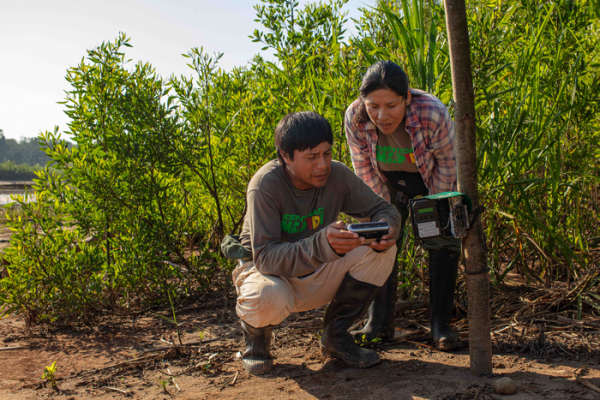WCS scientists working in the vast Amazon Basin have contributed more than 57,000 camera trap images for a new study published in the journal Ecology by an international team of 120 research institutions.
The study consists of 120,000-plus images taken in eight countries, representing the largest photo database to date of the Amazon’s staggering array of wildlife. The images show 289 species taken from 2001-2020 from 143 field sites.
The WCS images from Bolivia, Brazil, Colombia, Ecuador and Peru reveal playful jaguar cubs, a giant anteater lounging in a mud wallow, elusive short-eared dogs, along with tapirs, white-lipped peccaries, harpy eagles, toucans, pumas, Andean bears and dozens of other species. Jaguars and Andean bears are priority species for WCS.
The purpose of the study is to build a database of Amazon wildlife images, while also documenting habitat loss, fragmentation and climate change. The Amazon Basin covers nearly 3.2 million square miles (8.5 million square kilometers) in Brazil, Bolivia, Colombia, Ecuador, French Guiana, Peru, Suriname and Venezuela.
Read more at Wildlife Conservation Society
Image: Guido Ayala and Maria Viscarra setting a camera trap (Credit: Rob Wallace/WCS)


